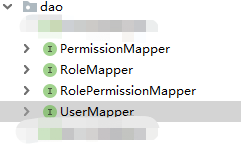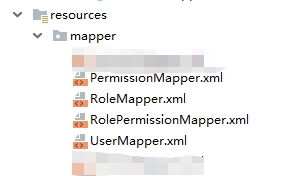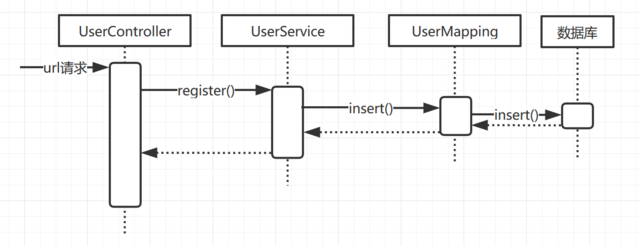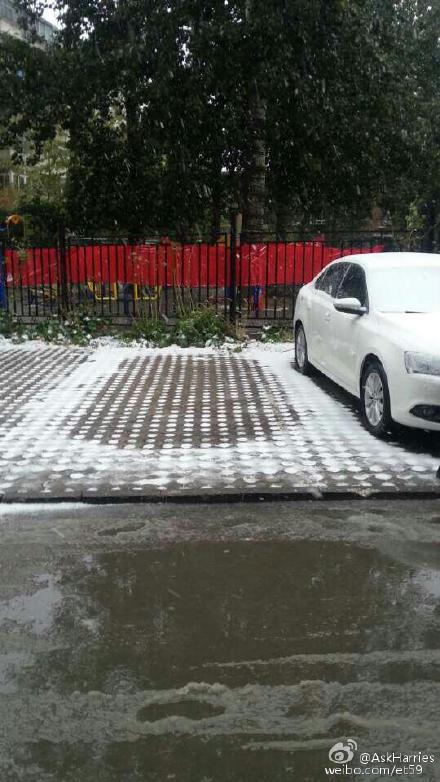Live-Server-5-SpringBoot中一个请求的流程
在上述文章中,已经完成了Springboot环境的搭建、数据库的配置、Pojo、MyBatis映射文件、Dao层、MVC的配置、资源的过滤与拦截、用户的认证与权限等。Spring一般搭配SpringMvc,也就是MVC模式一起使用,那么在MVC中,我们已经完成了model的编写,接下来要写Controller层、Service层如何响应请求、如何请求数据。
Spring注解
在SpringBoot中,有如下常用的注解:
- @Controller :用于定义控制器类,在Spring羡慕中由控制器负责将用户发来的URL请求转发到对应的服务接口(Service层)
- @RequestMapping :提供路由信息,复杂URL到Controller中具体函数的映射。通常包含请求的相对地址、GET/Post等请求方式
- @ResponseBody :该注解表示该方法返回的结果直接写入HTTP Response Body中,,如果使用该注解,返回值就是Json数据,不使用该注解函数的返回值就解析为跳转路径。通常的用法就是通过Map<String,Object>来设置Json数据的键值对。
- @RestController :用户表明控制层组件,是@ResponseBody和@Controller的集合。该注解定义的类中所有的类方法返回值类型都是Json数据。
- @GetMapping@PostMapping :是一个组合注解,是@RequestMapping(method = RequestMethod.GET/POST)的缩写
- @SpringBootApplication :让SpringBoot自动给程序进行配置的注解。
- @Configuration :相当于传统的Xml配置文件,只不过该注解作用与类中,通过Java代码来设置配置。
- @Import :用来导入其他配置类
- @ImportResource :用来加载xml配置文件
- @Autowired :自动导入依赖的bean,自动注入,直接使用配置好的bean,常常用于对类成员变量、方法以及构造方法进行标注,完成自动装配工作。
- @Service :用于修饰Service层的组件
Spring层的概念
也许,看到这里,你会有些奇怪,什么是Dao层,什么是Service层,Controller层又是什么呢?为什么要用Controller来处理响应呢?@Controller注解与Controller又有什么关系呢?这里就要提到SpringMVC层的概念:
- Controller层:负责具体业务模块流程的控制,调用Service层的接口来控制业务流程,并实现url映射 。在Spring中,Controller层通过@Controller、@RestController来标注
- Service层:建立在Dao层之上,Controller之下,负责业务模块的逻辑设计,先设计接口,再完成其实现类。Service层通过@Service来标注
- Dao层:负责数据的持久化,与数据库打交道的都封装在其中,Dao的数据源在Spring配置文件中进行配置。主要还是实现数据库CRUD方法并支持Service的拓展。Dao层类通过@Dao来标注。
- Pojo:数据实体类

层的引用、请求的流程
MyBatis-generator工具已经帮我们实现了Dao层的大部分工作,但是我们还需要在Spring配置文件中配置数据源。
Dao层概览如下:
首先是Dao层的映射接口:

这两个接口:
- updateByExample:在更新时,需要将实体对象中所有的属性都提供,不提供的属性将会赋值为NULL
- updateByExampleSelective:这个接口就明智多了,只对提供的属性进行修改,其他熟悉不变。
public interface UserMapper {
int countByExample(UserExample example);
int deleteByExample(UserExample example);
int deleteByPrimaryKey(Integer id);
int insert(User record);
int insertSelective(User record);
List<User> selectByExample(UserExample example);
User selectByPrimaryKey(Integer id);
int updateByExampleSelective(@Param("record") User record, @Param("example") UserExample example);
int updateByExample(@Param("record") User record, @Param("example") UserExample example);
int updateByPrimaryKeySelective(User record);
int updateByPrimaryKey(User record);
}
复制代码
Dao层具体的映射文件如下:

<?xml version="1.0" encoding="UTF-8" ?>
<!DOCTYPE mapper PUBLIC "-//mybatis.org//DTD Mapper 3.0//EN" "http://mybatis.org/dtd/mybatis-3-mapper.dtd" >
<mapper namespace="com.ljh.dao.UserMapper" >
<resultMap id="BaseResultMap" type="com.ljh.po.User" >
<id column="id" property="id" jdbcType="INTEGER" />
<result column="name" property="name" jdbcType="VARCHAR" />
<result column="account" property="account" jdbcType="VARCHAR" />
<result column="password" property="password" jdbcType="VARCHAR" />
<result column="role_id" property="roleId" jdbcType="INTEGER" />
</resultMap>
<sql id="Example_Where_Clause" >
<where >
<foreach collection="oredCriteria" item="criteria" separator="or" >
<if test="criteria.valid" >
<trim prefix="(" suffix=")" prefixOverrides="and" >
<foreach collection="criteria.criteria" item="criterion" >
<choose >
<when test="criterion.noValue" >
and ${criterion.condition}
</when>
<when test="criterion.singleValue" >
and ${criterion.condition} #{criterion.value}
</when>
<when test="criterion.betweenValue" >
and ${criterion.condition} #{criterion.value} and #{criterion.secondValue}
</when>
<when test="criterion.listValue" >
and ${criterion.condition}
<foreach collection="criterion.value" item="listItem" open="(" close=")" separator="," >
#{listItem}
</foreach>
</when>
</choose>
</foreach>
</trim>
</if>
</foreach>
</where>
</sql>
<sql id="Update_By_Example_Where_Clause" >
<where >
<foreach collection="example.oredCriteria" item="criteria" separator="or" >
<if test="criteria.valid" >
<trim prefix="(" suffix=")" prefixOverrides="and" >
<foreach collection="criteria.criteria" item="criterion" >
<choose >
<when test="criterion.noValue" >
and ${criterion.condition}
</when>
<when test="criterion.singleValue" >
and ${criterion.condition} #{criterion.value}
</when>
<when test="criterion.betweenValue" >
and ${criterion.condition} #{criterion.value} and #{criterion.secondValue}
</when>
<when test="criterion.listValue" >
and ${criterion.condition}
<foreach collection="criterion.value" item="listItem" open="(" close=")" separator="," >
#{listItem}
</foreach>
</when>
</choose>
</foreach>
</trim>
</if>
</foreach>
</where>
</sql>
<sql id="Base_Column_List" >
id, name, account, password, role_id
</sql>
<select id="selectByExample" resultMap="BaseResultMap" parameterType="com.ljh.po.UserExample" >
select
<if test="distinct" >
distinct
</if>
<include refid="Base_Column_List" />
from user
<if test="_parameter != null" >
<include refid="Example_Where_Clause" />
</if>
<if test="orderByClause != null" >
order by ${orderByClause}
</if>
</select>
<delete id="deleteByPrimaryKey" parameterType="java.lang.Integer" >
delete from user
where id = #{id,jdbcType=INTEGER}
</delete>
<insert id="insert" parameterType="com.ljh.po.User" >
insert into user (id, name, account,
password, role_id)
values (#{id,jdbcType=INTEGER}, #{name,jdbcType=VARCHAR}, #{account,jdbcType=VARCHAR},
#{password,jdbcType=VARCHAR}, #{roleId,jdbcType=INTEGER})
</insert>
<update id="updateByExample" parameterType="map" >
update user
set id = #{record.id,jdbcType=INTEGER},
name = #{record.name,jdbcType=VARCHAR},
account = #{record.account,jdbcType=VARCHAR},
password = #{record.password,jdbcType=VARCHAR},
role_id = #{record.roleId,jdbcType=INTEGER}
<if test="_parameter != null" >
<include refid="Update_By_Example_Where_Clause" />
</if>
</update>
</mapper>
复制代码
代码有所删减,在该映射文件中首先定义了xml文件的类型,随后定义了User这个类及类属性在数据库中的定义,再定义example,最后就是各个接口文件对于数据库的具体实现。
上述的类、映射文件都是通过数据库逆向生成的,那么如果我需要在SpringBoot中查询某一数据,我该到哪里去查呢?这时候就要定义数据源。在项目的application.properties文件中添加如下配置:
#数据源配置,默认使用tomcate-jdbc连接池 spring.datasource.url=jdbc:mysql://数据库地址:3306/数据库名字?useUnicode=true&characterEncoding=UTF8 spring.datasource.username=用户名 spring.datasource.password=用户密码 spring.datasource.driver-class-name=com.mysql.jdbc.Driver 复制代码
Service层
既然已经打通了Dao层与数据库之间的障碍,那么我们来看一下Service层是如何实现他的价值。我觉得写代码时,只要敢想,就没有做不到的事情,一个接口可以完成多种应用场景。灵活,就是我对Service接口的评价。
public interface UserService {
...
/**
* 注册成功则无异常抛出
* 用户名/手机被使用,则抛出异常
* @param user
* @throws ServiceException
*/
void register(User user) throws ServiceException;
/**
* 查找相似的user
* @param likeUser
* @return
*/
List<User> getUsers(User likeUser);
}
复制代码
就这么一个通过传入的user对象来获取类似User的接口,实现方式和应用的场景却是变化万千。 先来看看简单的方式:
@Service
public class UserServiceImpl implements UserService {
private static final Logger log = LoggerFactory.getLogger(UserServiceImpl.class);
@Autowired
private UserMapper userMapper; //Dao层接口
@Override
public List<User> getUsers(User likeUser) {
//构造example
UserExample example = new UserExample();
UserExample.Criteria criteria = example.createCriteria();
if (null != likeUser) {
if (null != likeUser.getId()) {
criteria.andIdEqualTo(likeUser.getId());
}
if (null != likeUser.getName()) {
criteria.andNameLike("%" + likeUser.getName() + "%");
}
if (null != likeUser.getAccount()) {
criteria.andNameLike("%" + likeUser.getAccount() + "%");
}
}
return userMapper.selectByExample(example);
}
}
复制代码
在上面的这个实现方式中,通过对传入的user对象属性进行判断,如果存在,则将该条件添加到example中,随后通过Dao层获取到类似的User数据。这个接口可以用于模糊搜索用户、查看某用户信息、如果用户的属性再复杂一些,就可以实现用户排序等功能。
Controller层
先来看下Controller层处理Url请求的方式
- 通过@RequestMapping(path = {"xxx"}, method = {RequestMethod.GET/POST}) 注解,标注目前方法对应的url相对请求是xxx,并可以定义为GET、POST、DELETE等方式。
- 处理方法参数: ①@PathVariable: 获取路径参数,即url/{id}的形式 ②@RequestParam:获取查询参数,即url?name=的形式 ③@RequestBody:如果传入的是一个Body参数(通常是Json数据),那么就需要该注解对该对象进行标注,然后会对该对象进行解析与赋值。 ④Form表单的请求:如果方法参数没有标注别名,那么form表单中的名字就必须与方法参数的名字相同,否则获取不到对应的数值。
看看代码实例:
@Controller
public class UserController {
@Autowired
private UserService userService;
@RequestMapping(path = {"register"}, method = {RequestMethod.POST})
@ResponseBody
public Map<String, Object> register(String account, String password, String name, String code) {
Map<String, Object> map = new HashMap<>();
//判断传入的数据是否为空
...
//判断传入的数据格式是否正确
...
//会话状态的验证
Session session = SecurityUtils.getSubject().getSession();
try {
User user = new User();
user.setAccount(account);
if (name == null) {
user.setName(user.getAccount());
}
user.setName(name);
user.setPassword(password);
user.setRoleId(2);//设置用户角色
//调用UserService对用户进行注册操作
userService.register(user);
map.put("msg", "注册成功");
return map;
} catch (Exception e) {
e.printStackTrace();
}
return map;
}
}
复制代码
上述的方法是一个Post的form表单请求,看起来参数很多,有点复杂,那么直接传入一个对象要怎么处理呢?
@RequestMapping(path = {"register"}, method = {RequestMethod.POST})
@ResponseBody
public Map<String, Object> register(@RequestBody User user) {
Map<String, Object> map = new HashMap<>();
//判断传入的数据是否为空
...
//判断传入的数据格式是否正确
...
//会话状态的验证
...
}
复制代码
使用注解@ResponseBody返回Json格式的数据,如果不使用该注解,则跳转到对应的页面。
整个请求的时序图如下:

- 本文标签: json 构造方法 参数 java ACE cat CTO Collection list example tomcat Service UI 实例 session mybatis spring Word 数据库 需求 IO value selectByPrimaryKey dataSource db Property 配置 Select HashMap BaseResultMap mysql http mapper 代码 key JDBC final 认证 Security map 解析 springboot REST src js ORM IDE XML 连接池 返回值类型 update 文章 sql App id SpringMVC dist https bean 数据
- 版权声明: 本文为互联网转载文章,出处已在文章中说明(部分除外)。如果侵权,请联系本站长删除,谢谢。
- 本文海报: 生成海报一 生成海报二











![[HBLOG]公众号](https://www.liuhaihua.cn/img/qrcode_gzh.jpg)

